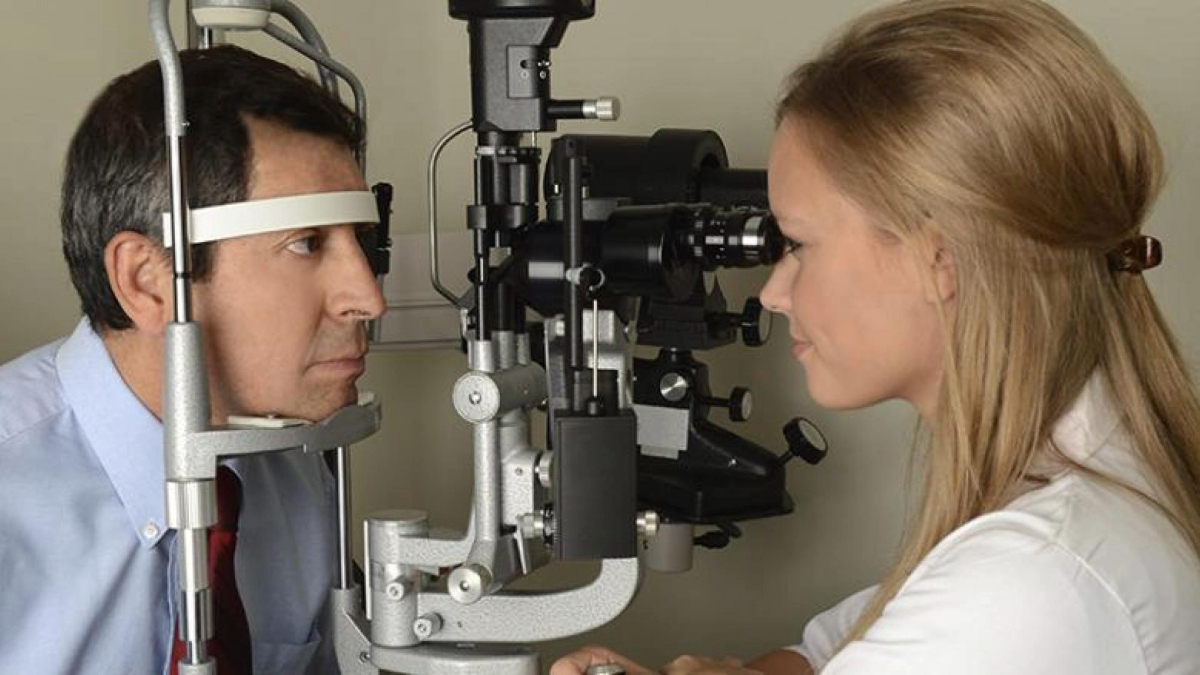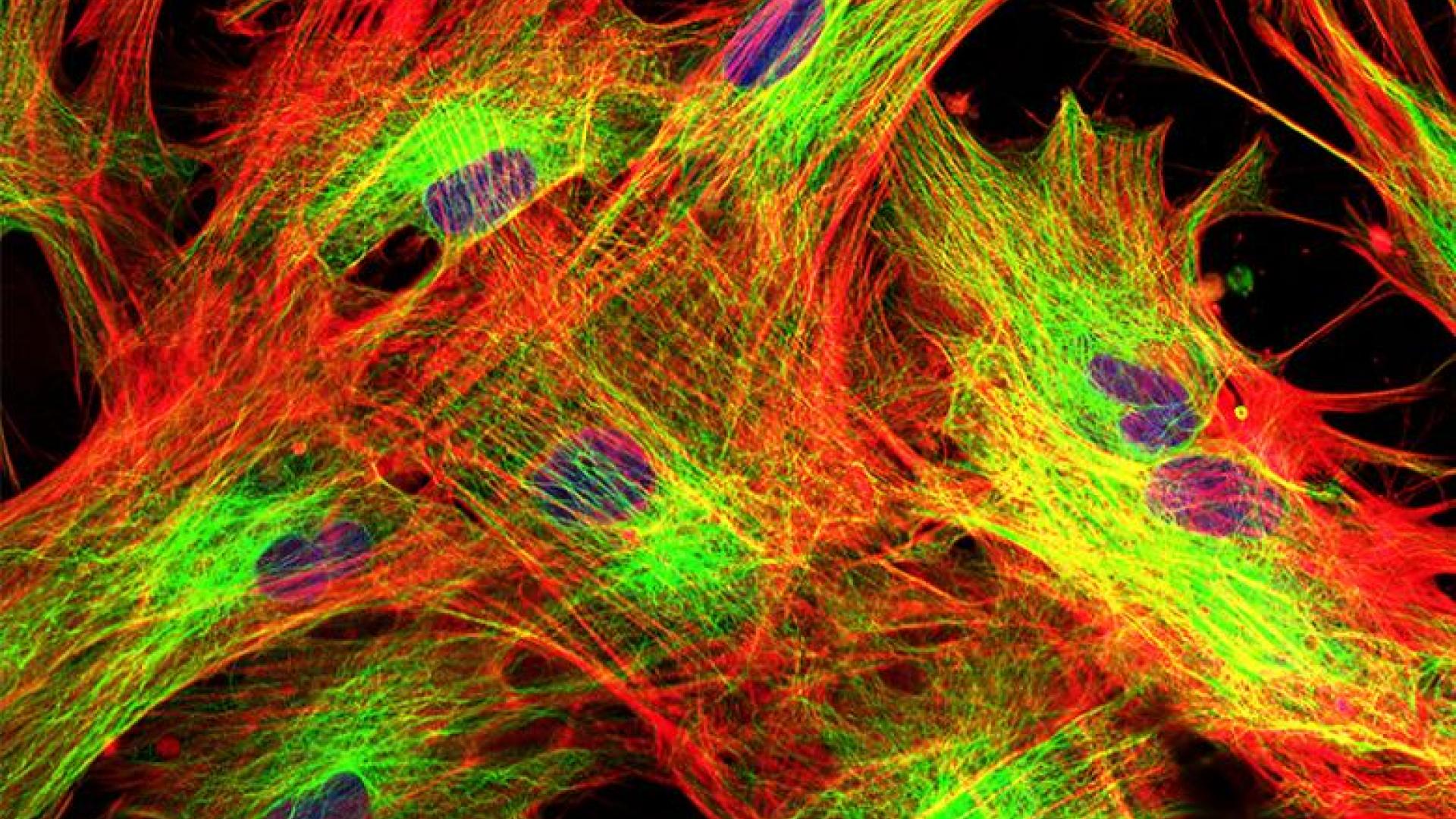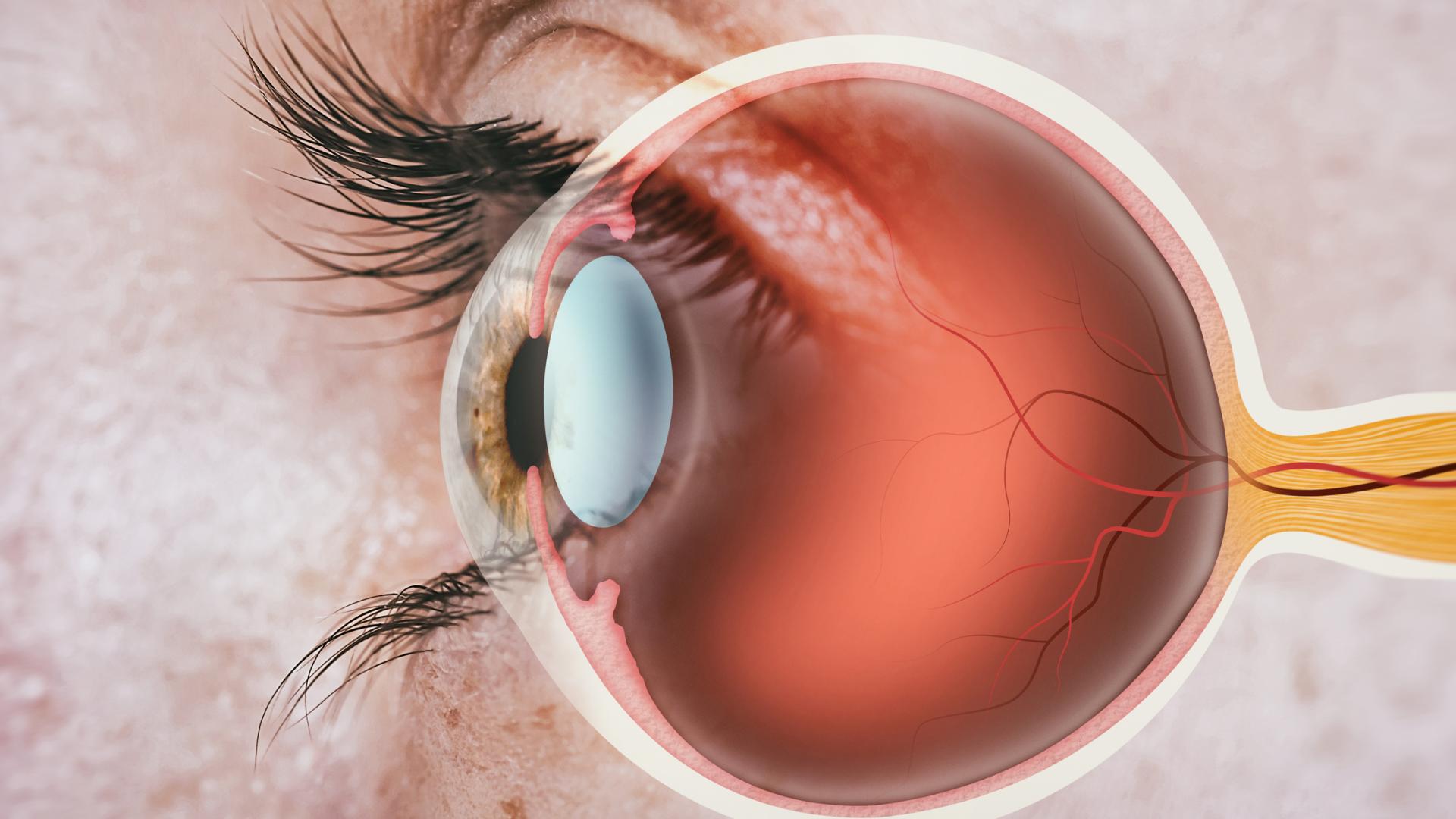
Learn about an age-related disease manifesting itself primarily in the eyes, called pseudoexfoliation syndrome, which increases the risk of developing glaucoma.
About Pseudoexfoliation Syndrome and Pseudoexfoliation Glaucoma
Pseudoexfoliation syndrome is a disorder in which flakes of material accumulate at the edge of the pupil, on the lens, in the drainage structures, and throughout other structures primarily in the front of the eye. When the eye’s drainage system is clogged by this flaky pseudoexfoliative material, as well as pigment, the eye pressure can increase and lead to pseudoexfoliation glaucoma. This syndrome refers to a condition that involves the entire body but manifests primarily in the eyes.
Pseudoexfoliation glaucoma, or pseudoexfoliative glaucoma, is the same condition with the addition of elevated eye pressure and evidence of damage to the optic nerve.
Pseudoexfoliation is not to be confused with “true exfoliation”, which is due to heat or infrared exposure (and which can be found among glassblowers).
Is Pseudoexfoliation Syndrome an Eye Disease?
Pseudoexfoliation material is associated with many organs throughout the body, including the lungs, skin, liver, heart, kidney, and gallbladder, just to name a few. However, it only manifests as a disease in the eye, where there are flakes of material at the edge of the pupil, on the lens, in the drainage structures, and throughout other structures primarily in the front of the eye. When the eye’s drainage system is clogged by this flaky pseudoexfoliative material, as well as pigment, the eye pressure can increase and lead to glaucoma.
Risk Factors
Who is likely to have pseudoexfoliative syndrome? It is rarely seen before the age of 50, and its incidence increases with age. It is more common in women than in men. There is a high prevalence of pseudoexfoliation syndrome in Scandinavian countries, where it is estimated that 50 percent of open-angle glaucoma is caused by pseudoexfoliation syndrome. On the other hand, it is relatively rare among African Americans and Eskimos. However, it is also seen more often in Europe, the Middle East, South Africa, and South America. Indeed, pseudoexfoliation syndrome is likely found in all populations. In addition to age, gender, and race, another risk factor is genetics. Some people carry a variant in the LOXL1 gene that is a risk factor for pseudoexfoliation glaucoma.
Is Glaucoma Inevitable with Pseudoexfoliation Syndrome?
If you have pseudoexfoliation syndrome, does that mean you will develop glaucoma? Although there are patients in whom pseudoexfoliation material is seen but there is no sign of glaucoma, it is estimated that approximately 40 – 50 percent of patients who have pseudoexfoliation syndrome will eventually develop glaucoma. Therefore, it is important for those who are diagnosed with this syndrome (which is symptomless and therefore requires an ophthalmic examination to diagnose), to be followed over time to monitor for the development of glaucoma. Indeed, sometimes pseudoexfoliation syndrome is subtle and can be missed. A careful examination by an ophthalmologist, including a detailed look at the drainage angle and a dilated eye exam, will help to determine the diagnosis.
Unique Features of Pseudoexfoliation Syndrome and Treatment Options
What are some of the unique features of glaucoma associated with pseudoexfoliation syndrome? Unfortunately, eye pressure can be quite high in this disease, and can be more difficult to control than in primary open-angle glaucoma. It is often associated with worse field of vision loss and greater optic nerve damage than in patients who have primary open-angle glaucoma. Indeed, sometimes pseudoexfoliation glaucoma can even be associated with angle-closure glaucoma because the material deposits on portions of the eye that keep the lens in the correct position. When these structures become weak, the lens can come forward and cause the angle to narrow.
Therefore, it is sometimes recommended that a preventive laser iridotomy be performed to prevent an acute angle closure attack. In addition, as with all glaucomas, the treatment for pseudoexfoliation glaucoma is to lower the eye pressure. Unfortunately, sometimes medications will fail to control eye pressure, although laser can be very effective. Finally, surgeries such as trabeculectomy are sometimes needed for long-term eye pressure control.
The Challenges of Cataract Surgery and Pseudoexfoliation Syndrome
Pseudoexfoliation syndrome and pseudoexfoliation glaucoma also present unique challenges when considering cataract surgery. Just as described above, when material deposits on the structures holding the lens in place, these structures are weaker and will predispose the patient to increased risk of complications during cataract surgery, or even late dislocation of the implanted intraocular lens over time. However, the surgeon will take extra precautions to avoid these complications. In addition, it is sometimes recommended that patients not wait too long before cataract surgery because the surgery becomes more difficult if the cataract is very dense or mature. If you have pseudoexfoliation syndrome or pseudoexfoliation glaucoma it is important to have a frank discussion with your ophthalmologist prior to cataract surgery so that you fully understand the risks.
Prevention of Pseudoexfoliation Syndrome
Is there anything you can do to prevent pseudoexfoliation syndrome? Much research is ongoing to try to understand the environmental risk factors that predispose one to developing pseudoexfoliation in the first place. At this point, however, the best recommendations are the same as for all age-related eye diseases: get a comprehensive eye examination by an eye doctor (baseline at age 40, and every 1-2 years for seniors age 65 and over) and wear sunglasses. If you are diagnosed with pseudoexfoliation syndrome, it is important to maintain follow-up visits with your ophthalmologist to monitor for the development of glaucoma.
About BrightFocus Foundation
BrightFocus Foundation is a premier global nonprofit funder of research to defeat Alzheimer’s, macular degeneration, and glaucoma. Since its inception more than 50 years ago, BrightFocus and its flagship research programs—Alzheimer’s Disease Research, Macular Degeneration Research, and National Glaucoma Research—has awarded more than $300 million in research grants to scientists around the world, catalyzing thousands of scientific breakthroughs, life-enhancing treatments, and diagnostic tools. We also share the latest research findings, expert information, and resources to empower the millions impacted by these devastating diseases. Learn more at brightfocus.org.
Disclaimer: The information provided here is a public service of BrightFocus Foundation and is not intended to constitute medical advice. Please consult your physician for personalized medical, dietary, and/or exercise advice. Any medications or supplements should only be taken under medical supervision. BrightFocus Foundation does not endorse any medical products or therapies.
- Disease Biology









